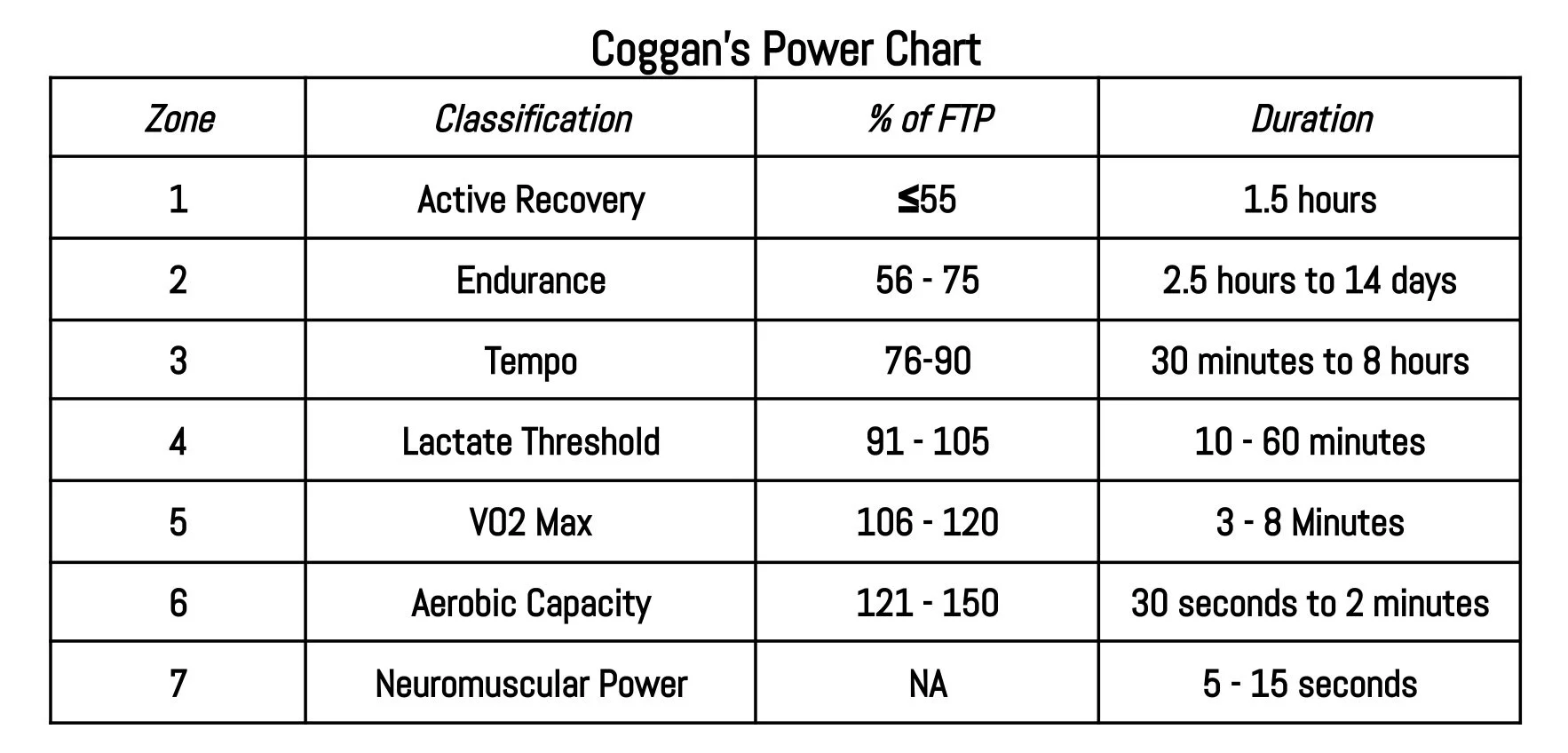Why FTP Alone Won’t Make You Faster (And What Will)
Functional Threshold Power (FTP) is the highest power a rider can maintain at a semi-steady state without fatigue for approximately one hour. It is a measurement used to determine our power zones and to design workouts that maximize performance and reduce the risk of overexertion and injury. It’s a similar concept to a one-rep max in weightlifting. FTP is an optimal performance metric and not an expected performance metric. Training sessions are designed to improve FTP without performing at FTP. During the Base Phase of a training program most training sessions are designed to improve endurance or tempo. As we get closer to a competition and move into the Build Phase our sessions will shift focus towards lactate threshold and VO2 max.
There are several tests used to determine your FTP but all require the use of a power meter. Once your FTP is obtained your power zones can be identified.
A misconception among athletes is training at maximum effort all the time. This leads to fatigue, burnout, and injuries. Working at 100% effort is not sustainable and will actually lead to poor performance. The goal of any athlete should be to train as little as possible to achieve the desired result. This translates to optimizing training and recovery sessions as well as rest. To better assist in managing training sessions, coaches will utilize the Training Stress Score (TSS). This number takes into account the duration and intensity of a workout to determine the overall training load and physiological stress created by the session and allows for proper planning.
Expanded Details on FTP and Training
FTP is a powerful benchmark for cyclists because it sets the foundation for training prescription. However, relying solely on FTP as a target in every workout or race effort ignores the complexity of how the body adapts to stress and recovers. Your body needs variety: long endurance rides, tempo efforts, threshold training, and even short explosive bursts. Each of these training zones triggers different adaptations — from improving fat metabolism in Zone 2 to increasing your body’s ability to clear lactate near threshold in Zone 4 and enhancing your VO2 max in Zone 5.
Simply chasing FTP day in and day out can cause rapid burnout. The muscle fibers, energy systems, and nervous system all require targeted, periodized stress and adequate recovery time. A strong base with endurance and tempo rides will ultimately improve your FTP more than consistently riding at or near FTP. This is because you’re teaching your body to efficiently use oxygen, burn fat, and recover between high-intensity efforts.
How Training Stress Score (TSS) Helps Manage Load
The Training Stress Score quantifies how hard a workout is by combining its intensity (relative to FTP) and duration. A short, all-out 10-minute effort may have a similar TSS to a long, steady 3-hour ride at moderate intensity. Tracking TSS helps athletes and coaches balance training load to avoid overtraining while maximizing fitness gains.
Effective training plans periodize TSS by alternating hard sessions with recovery or easy rides. The goal is to gradually increase your fitness without breaking the body down.
What Really Makes You Faster
Varied training across zones builds a more resilient and capable engine than chasing FTP alone.
Building an aerobic base in Zones 1 and 2 helps your body burn fat and sustain longer efforts without fatigue.
Threshold training in Zone 4 raises the intensity at which lactate begins to accumulate, allowing you to ride harder for longer.
VO2 max intervals in Zone 5 push your cardiovascular system and improve your maximum oxygen consumption.
Short, explosive efforts in Zones 6 and 7 develop sprint power and neuromuscular coordination.
FTP is one measurement, but performance is a product of many factors working in concert — training variety, recovery, nutrition, mental toughness, and more.

